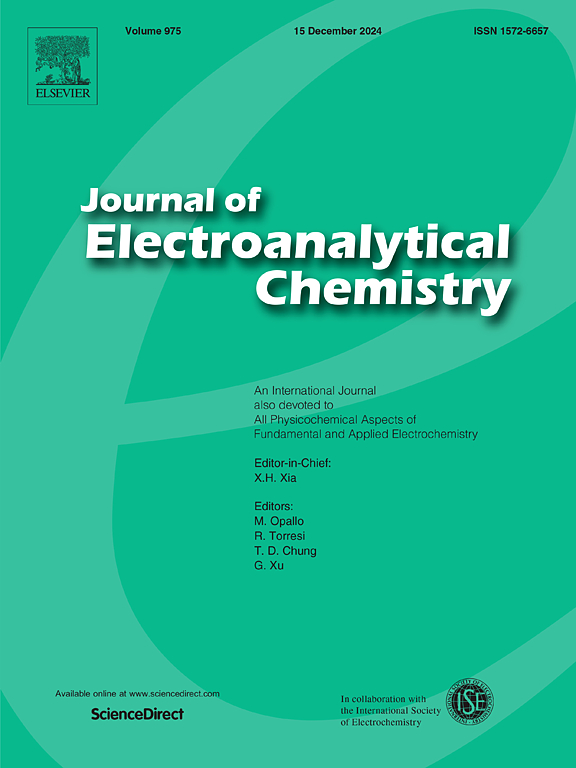The electrochemical enhancement effect and synergistic modification mechanism of V-Cl co-doping on carbon coated lithium iron phosphate cathode materials
IF 4.1
3区 化学
Q1 CHEMISTRY, ANALYTICAL
引用次数: 0
Abstract
The low electronic conductivity and ion diffusion rate of lithium iron phosphate (LiFePO4) are the main factors limiting its further development as a positive electrode material for lithium-ion batteries. Element doping is an effective method to improve these limitations. In this study, the method of co-doping with cations and anions has been attempted to improve the electrochemical performance of lithium iron phosphate cathode materials. V-Cl co-doped LiFePO4/C samples were successfully prepared using the high temperature solid-phase method. The controlled particle size LiFe0.95V0.05PO0.95Cl0.05/C was characterized using XRD, XPS, SEM, and the band structure changes of the system were calculated using the first-principles calculations. The results show that V-Cl co-doped lithium iron phosphate materials could significantly enhance the electrochemical performance of lithium iron phosphate batteries, especially at 1C and 5C rates (1C = 170 mAh/g), where the capacities of the modified lithium iron phosphate battery electrodes could still maintain 89 % and 83 % after 1000 cycles. The synergistic effect of anions and cations in V-Cl co-doped system has been confirmed by the first-principles calculations, could effectively reduce the energy barrier for electronic band transitions and improve electronic conductivity.
求助全文
约1分钟内获得全文
求助全文
来源期刊
CiteScore
7.80
自引率
6.70%
发文量
912
审稿时长
2.4 months
期刊介绍:
The Journal of Electroanalytical Chemistry is the foremost international journal devoted to the interdisciplinary subject of electrochemistry in all its aspects, theoretical as well as applied.
Electrochemistry is a wide ranging area that is in a state of continuous evolution. Rather than compiling a long list of topics covered by the Journal, the editors would like to draw particular attention to the key issues of novelty, topicality and quality. Papers should present new and interesting electrochemical science in a way that is accessible to the reader. The presentation and discussion should be at a level that is consistent with the international status of the Journal. Reports describing the application of well-established techniques to problems that are essentially technical will not be accepted. Similarly, papers that report observations but fail to provide adequate interpretation will be rejected by the Editors. Papers dealing with technical electrochemistry should be submitted to other specialist journals unless the authors can show that their work provides substantially new insights into electrochemical processes.

 求助内容:
求助内容: 应助结果提醒方式:
应助结果提醒方式:


